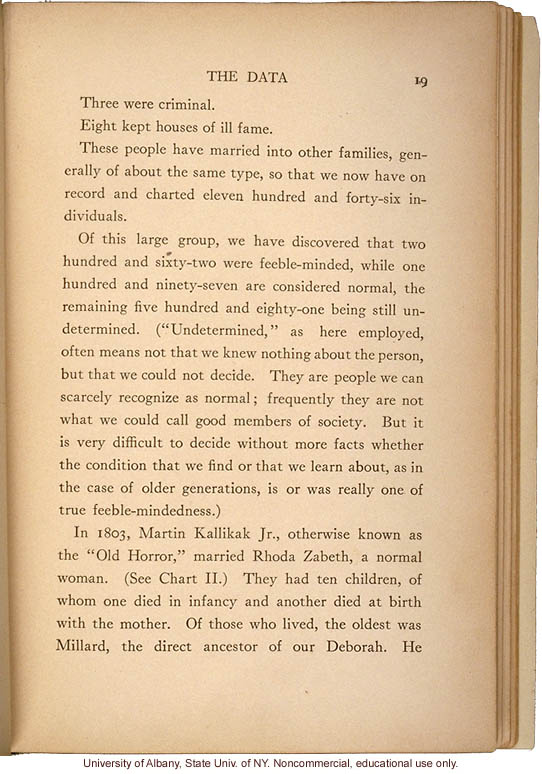The Data 19
Three were criminal.
Eight kept houses of ill fame.
These people have married into other families, generally of the same type, so that we now have on record and charted eleven hundred and forty-six individuals.
Of this large group, we have discovered that two hundred and sixty-two were feeble-minded, while one hundred and ninety-seven are considered normal, the remaining five hundred and eighty-one being still undetermined. ("Undetermined," as here employed, often means not that we knew nothing about the person, but that we could not decide. They are people we can scarcely recognize as normal; frequently they are not what we would call good members of society. But it is very difficult to decide without more facts whether the condition that we find or learn about, as in the case of older generations, is or was really one of true feeble-mindedness. )
In 1803, Martin Kallikak, Jr., otherwise known as the "Old Horror," married Rhoda Zabeth, a normal woman. (See Chart II.) They had ten children, of whom one died in infancy and another died at birth with the mother. Of those who lived, the oldest was Millard, the direct ancestor or our Deborah. He
[end]


